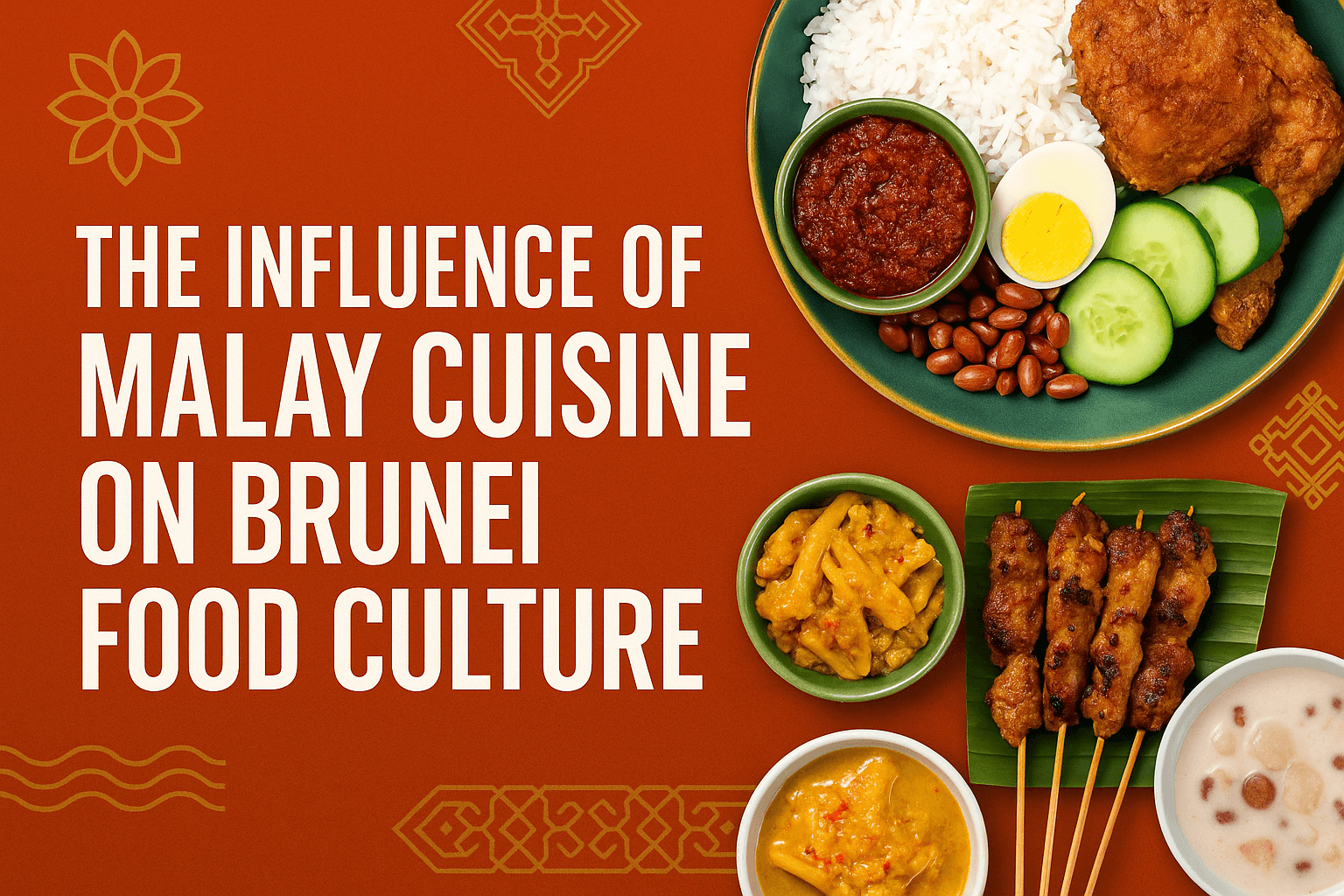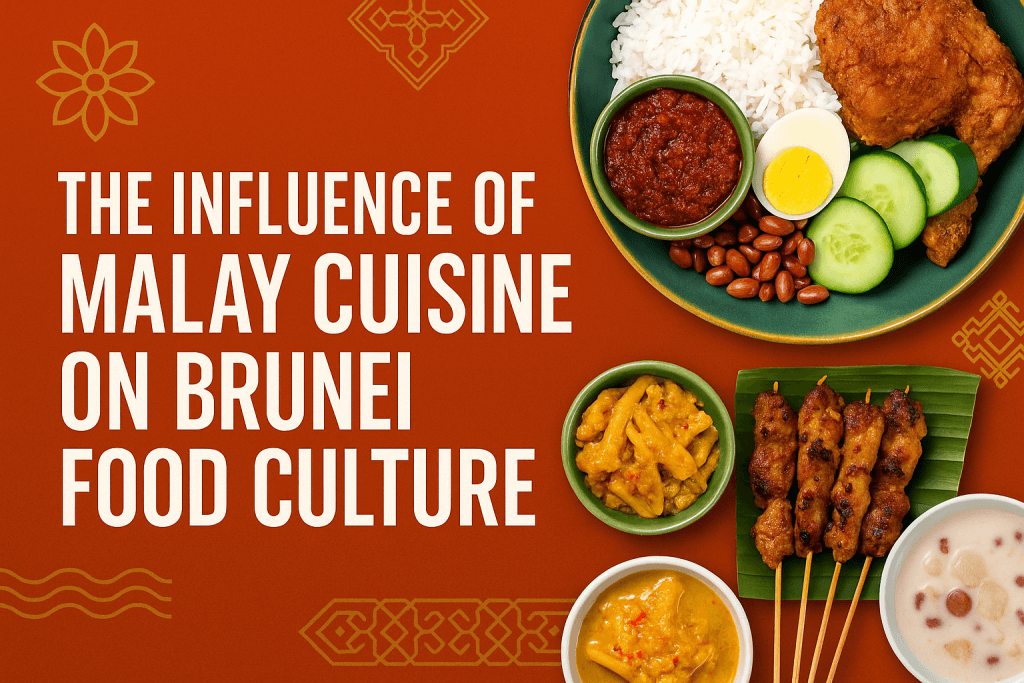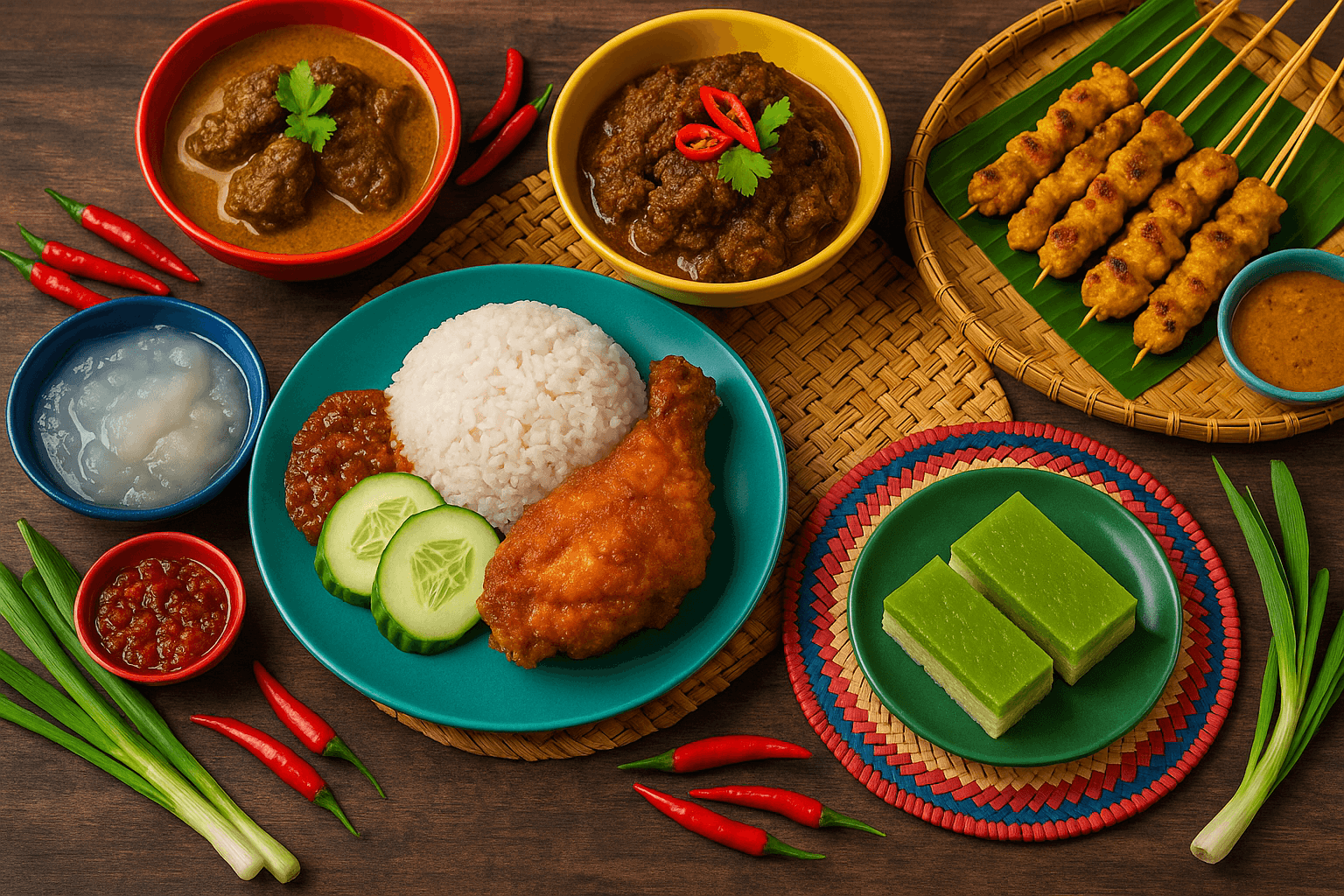Food is one of the strongest markers of identity, tradition, and heritage in Southeast Asia. In Brunei, the culinary landscape is deeply tied to the cultural expressions of the Malay world. The Influence of Malay Cuisine on Brunei Food Culture can be seen in the everyday meals of local families, the festive dishes prepared during religious celebrations, and the street food that attracts both residents and visitors. Rooted in centuries of migration, trade, and shared traditions, Malay food practices have shaped Brunei’s flavors, techniques, and eating habits into what we recognize today as uniquely Bruneian yet unmistakably Malay at its core.
This article explores how Malay cuisine has left an indelible mark on Brunei’s food traditions. It highlights the evolution of shared dishes, the integration of spices and cooking methods, and the symbolic importance of food within the broader cultural setting of Brunei. It also examines how Malay influence continues to adapt in modern times while preserving its authentic essence.

Historical Roots of Malay Influence
The Malay people, spread across present-day Malaysia, Indonesia, Singapore, and Brunei, share a linguistic and cultural heritage that extends beyond political boundaries. Brunei, being part of this Malay world, naturally developed a food culture heavily shaped by Malay traditions.
Maritime trade routes of the Malay Archipelago facilitated the exchange of ingredients like spices, rice, coconut, and seafood.
Islamic influence in the region reinforced the emphasis on halal practices, shaping the core identity of Brunei’s cuisine.
Royal connections between Brunei and Malay sultanates created ceremonial dishes that still dominate festive tables today.
The continuity of Malay culture in Brunei means that traditional cooking methods, such as slow stewing with coconut milk, grilling with banana leaves, and stir-frying with aromatic spices, remain central.
Signature Malay Dishes in Brunei
A strong way to measure The Influence of Malay Cuisine on Brunei Food Culture is by looking at signature dishes that have become staples in the Bruneian diet.
Nasi Katok
A simple yet iconic dish of rice, fried chicken, and sambal. Its affordability and accessibility make it one of the most popular street foods in Brunei. The sambal itself is a quintessential Malay condiment that Brunei has adopted and customized.
Ambuyat
Though often considered Brunei’s national dish, Ambuyat’s dipping sauces draw heavily from Malay influences, particularly the use of belacan (shrimp paste), chili, and lime.
Rendang
Originating from Minangkabau Malays of Sumatra, rendang is slow-cooked beef in coconut milk and spices. It has become a festive delicacy in Brunei, especially during Hari Raya celebrations.
Satay
Grilled skewers of meat served with peanut sauce, widely enjoyed across the Malay world. In Brunei, satay stalls are a common sight in night markets.
The Role of Spices and Herbs
Spices are the backbone of Malay cooking, and Brunei’s kitchens are no exception. The presence of turmeric, galangal, lemongrass, ginger, chilies, and tamarind illustrates The Influence of Malay Cuisine on Brunei Food Culture in shaping flavors.
Turmeric adds color and earthy aroma to curries.
Lemongrass brings freshness to soups and grilled meats.
Chili defines the level of heat in sambal and sauces.
Coconut milk balances spiciness with creamy richness.
These ingredients symbolize a continuity of Malay identity that transcends borders.
Food and Cultural Identity
Food is not only about sustenance but also a reflection of collective identity. In Brunei, to eat in Malay tradition is to partake in rituals of community and respect.
Family dining is central, with meals shared from large communal plates.
Festivals like Hari Raya feature dishes of Malay origin as a sign of unity and hospitality.
Hospitality culture ensures that guests are offered rice, curries, and sweets, mirroring Malay etiquette.
Thus, The Influence of Malay Cuisine on Brunei Food Culture extends beyond taste and into social relationships and values.
Religious and Festive Significance
Islam plays a defining role in Brunei’s national identity. Malay cuisine, shaped by Islamic practices, aligns with this religious context.
Halal food preparation ensures adherence to Islamic dietary laws.
Ramadan traditions highlight Malay-inspired dishes such as bubur lambuk, kurma dates, and sweet kueh varieties.
Hari Raya Aidilfitri celebrations are incomplete without rendang, satay, and lemang—all Malay in origin.
This reinforces the spiritual and cultural bond between Malay traditions and Bruneian food practices.
Street Food and Night Markets
Night markets in Brunei display The Influence of Malay Cuisine on Brunei Food Culture in their vibrant stalls. Popular Malay snacks and meals dominate these spaces:
Kueh varieties such as seri muka, onde-onde, and kuih lapis.
Satay stalls with smoky skewers.
Rice dishes like nasi lemak with sambal anchovies.
The communal experience of gathering in markets to enjoy these foods reflects the Malay cultural emphasis on sharing and togetherness.
Modern Adaptations
While tradition holds strong, Brunei’s culinary scene is not static. Malay influence continues to evolve in contemporary dining.
Fusion dishes blend Malay flavors with international cuisines.
Health trends encourage lighter versions of coconut-rich dishes.
Younger generations embrace Malay street food culture through digital platforms, sharing recipes and market highlights.
These modern adaptations ensure that The Influence of Malay Cuisine on Brunei Food Culture remains relevant and appealing.
Culinary Techniques Passed Down
Malay techniques form the backbone of Brunei cooking methods:
Grilling in banana leaves enhances aroma.
Slow braising in coconut milk allows depth of flavor.
Pounding spices in traditional mortars ensures authenticity.
Fermentation of shrimp paste and sauces provides distinctive umami.
Each of these practices reinforces the Malay identity embedded in Brunei kitchens.
The Role of Women in Preserving Tradition
In both Malay and Brunei societies, women play a central role in passing down culinary heritage. Recipes are shared orally, refined over generations, and preserved through festive gatherings. Their role ensures the continuation of authentic flavors within the household, highlighting another dimension of The Influence of Malay Cuisine on Brunei Food Culture.
Regional Similarities and Differences
Although Brunei shares many Malay dishes, local adaptation creates unique variations:
Bruneian sambal tends to be sweeter compared to Malaysian versions.
Ambuyat sauces differ from traditional Malay dips.
Local herbs unique to Brunei add regional identity.
These subtle differences showcase Brunei’s originality while acknowledging Malay roots.
Culinary Diplomacy and Tourism
Food has become a tool of cultural diplomacy. Brunei often uses Malay-inspired dishes to present its identity on the international stage. Tourists are drawn to local cuisine, where The Influence of Malay Cuisine on Brunei Food Culture provides both authenticity and familiarity within the broader Southeast Asian context.
Sustainability and Local Ingredients
Malay traditions emphasize using locally available ingredients. In Brunei, this translates into sustainable food practices:
Fishing communities supply fresh seafood for Malay-style dishes.
Coconut plantations sustain traditional curries and desserts.
Rice cultivation continues to be a cultural symbol despite imports.
This eco-friendly approach links Malay practices to Brunei’s modern food security strategies.
Future of Malay Influence in Brunei
As globalization expands, Brunei faces challenges in preserving traditional Malay food practices. Yet, the resilience of these traditions ensures survival:
Digital recipe preservation through blogs and videos.
Culinary schools teaching Malay techniques.
Government initiatives promoting local food heritage.
Thus, The Influence of Malay Cuisine on Brunei Food Culture is not only a matter of history but also a living, evolving identity.
Conclusion
Brunei’s culinary landscape cannot be understood without acknowledging its deep roots in the Malay world. From everyday sambal to festive rendang, from street satay to ceremonial rice dishes, Malay influence permeates Brunei’s kitchens, dining tables, and cultural life. The Influence of Malay Cuisine on Brunei Food Culture represents more than just shared recipes; it reflects centuries of heritage, religion, identity, and adaptation.
Brunei’s food is a living archive of Malay culture, continually refreshed by modern trends while anchored in tradition. As the nation progresses, its cuisine will remain a vital expression of both Brunei’s uniqueness and its inseparable connection to the Malay world.


